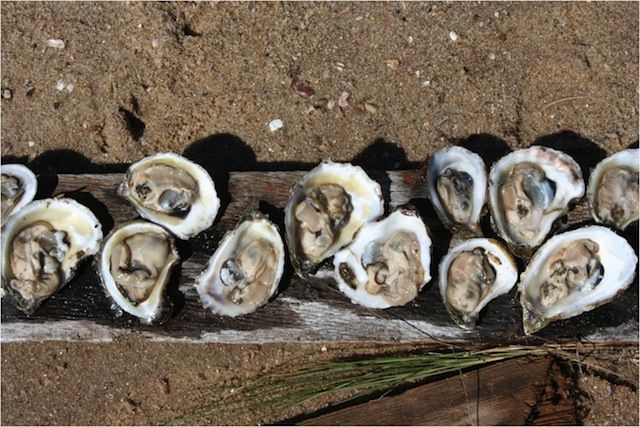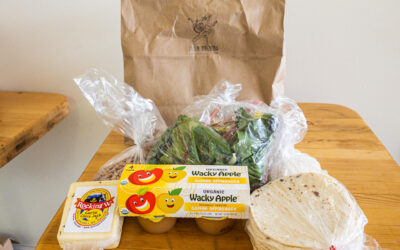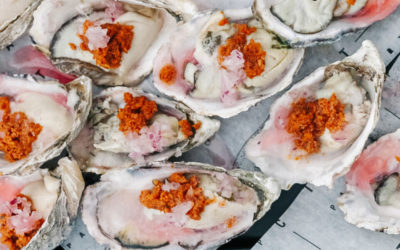Eugenia Bone, author of The Kitchen Ecosystem, provided a blog post a recipe to Slow Food USA.
The Long Island Oyster
Crassostrea virginica

I’ve owned a most, sunny little cottage in Southampton for years. When my kids were small I took them to the bay beaches, because they were more intimate than the ocean; calmer and safer, and active with delightful swimming, soaring, crawling life: crabs, snails, minnows, insects, birds. It was in the bay areas of Long Island sound that I taught my kids how to swim, how to seine for spearling, and how to hunt for Crassostrea virginicas at low tide.
We know a protected cove on a neck of pebbly land that reliably produced large oysters for years, and we always brought a dozen or so home, never more than we could eat in 24 hours or so. Only once did I eat them on the beach, however, and it was revelatory. It was a glorious early fall day, and the oysters were plump from summer feeding. We gathered a dozen or so quickly, opened them, and laid them out on a piece of driftwood in lieu of a table. Oysters are often served in restaurants super cold, but these were the same temperature as the bay and the air, about 60 degrees. They were shimmering in their liquor, they smelled like the sea. And the flavor! I had eaten that species for almost a decade, but they’d never been so bright, so briny, and so mineral-y sharp. I realized that this was what C. virginica really tastes like. And we were able to experience that taste because they were so fresh, and because we ate them at their living temperature. The essential flavor, it seems, was revealed when we hewed closely to the oyster’s natural, healthy living state.
After we ate the oysters we flung the shells back in the water. Within minutes snails, little crabs, and baby fish descended upon it, nibbling the bits of oyster meat that remained. Eventually we couldn’t even see the shell anymore, just a mound of busy black snails. It was a vibrant reminder of the efficiency of nature. I think of that oyster shell often and I find myself admiring those snails. They know what I need to remember: to hew closely to nature for the best tasting life.
If you don’t have the chance to pluck oysters fresh from the sea, here is a different but absolutely delicious way to enjoy them.
Fried Oysters with Tartar Sauce
Serves 4
From The Kitchen Ecosystem
I usually cook with my own breadcrumbs, but for this dish I like a very crispy crust. Ground Japanese Panko breadcrumbs, widely available in grocery stores, do that best. You can use bottled oysters in this dish; just drain them well (and use the stock in your next fish soup). You can make a Po Boy sandwich by filling a soft white baguette with the fried oysters, tartar sauce, and shredded iceberg lettuce.
24 plump oysters, drained and patted dry
1 scant cup flour
2 eggs, beaten
2 cups Panko breadcrumbs, finely ground
Vegetable oil for frying
Salt to taste
1 lemon, cut into wedges
1 cup tartar sauce (recipe below)
Have ready three low bowls with the eggs, flour, and breadcrumbs each in their own bowl. Dredge the oysters in the flour, dunk in the egg, and cover with the Panko.
In the meantime, heat the oil in a large nonstick skillet. Add the oyster and fry them until golden, a minute or two, then turn them over and fry for a few minutes more. Drain on paper towels. Add salt to taste.
Tartar Sauce
Makes 1 cup
Homemade mayo always tastes best.
1 cup mayonnaise (homemade is best)
3 tablespoons pickle relish, or minced bread and butter pickles or picnic slices
1 tablespoon minced dill, parsley, or cilantro
Combine the mayonnaise, pickle, and herbs in a small bowl. Chill. To hold in the fridge for up to 4 days, place a piece of plastic wrap over the bowl, patted down on top of the tartar sauce, so it doesn’t develop a skin.
Of course, you can preserve oysters. You simply open them and rinse in a salt brine, pack them into half pint or pint jars with their strained liquor, cover in a weak salt brine (1 tablespoon of salt per quarter of water), leave 1 inch of headroom and process for 75 minutes at 10 pounds of pressure up to 1,000 feet altitude, or 15 pounds of pressure at altitudes of 1,000 feet or over. Check the seals and store in a cool dark place. Use within a year. If you seals are good but you are still worried about your food, dump the contents of the jar into a pot and boil for 10 minutes at sea level, adding 1 minute for every 1,000 feet above sea level. Be sure to check your pressure canner’s manufacturing instructions for details regarding safe canning of seafood in your particular model.





